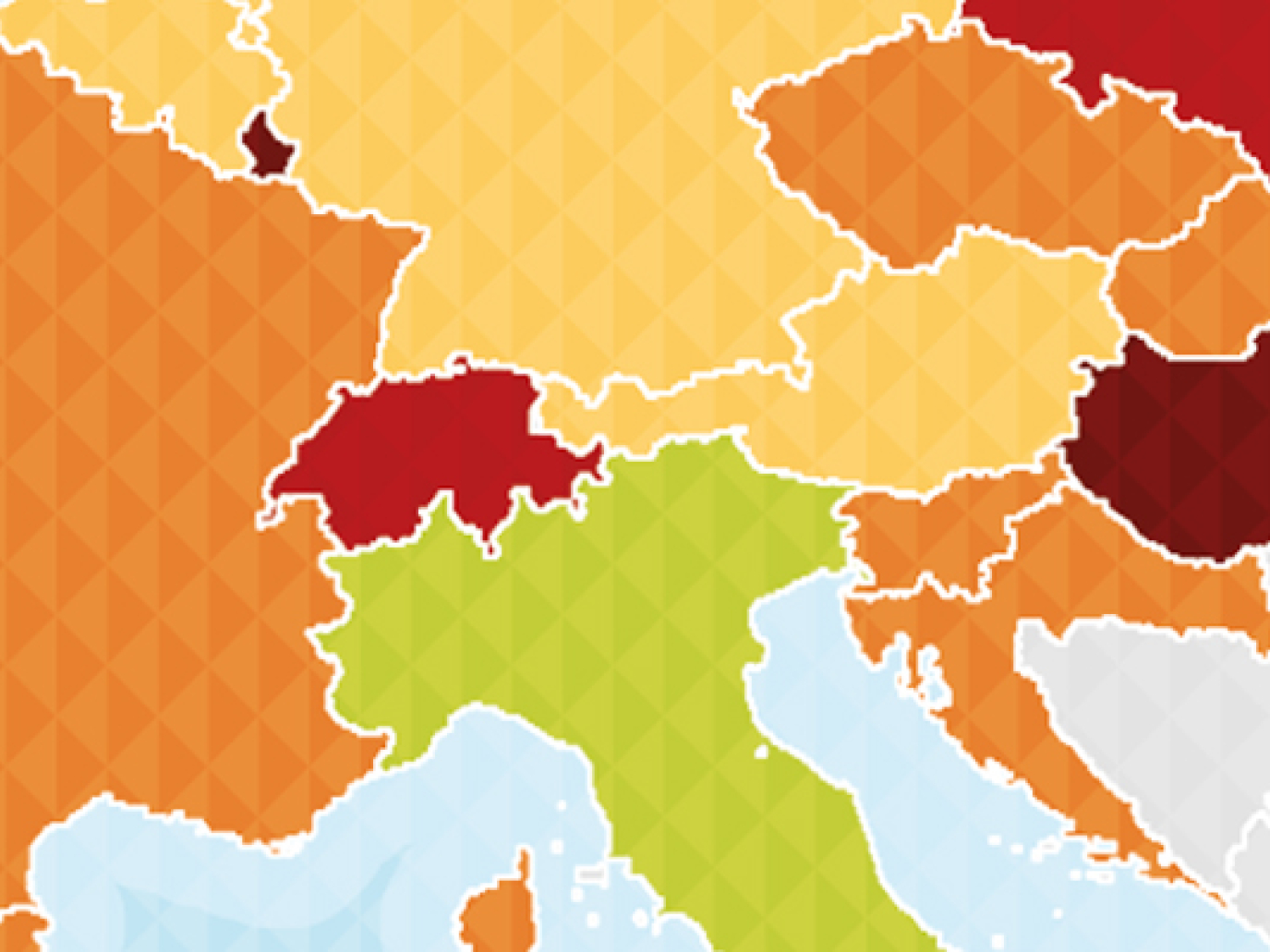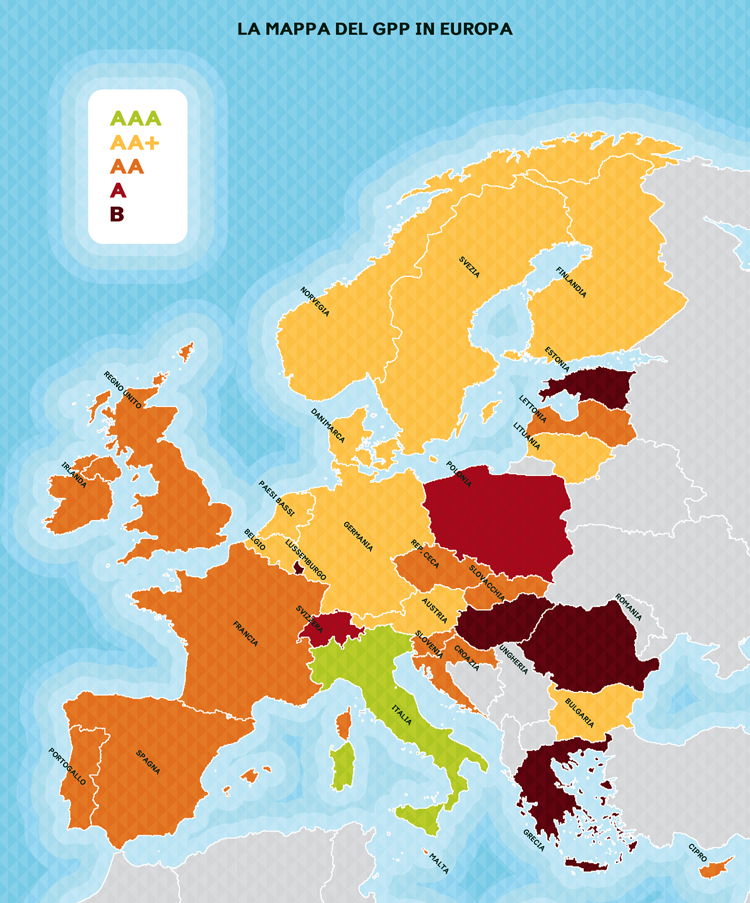
For once, we are top of the class. Italy has just made GPP (Green public procurement) compulsory after years of scarcely effective advice. Now, thanks to the new procurement code, all public administrations must include environmental criteria in their calls for tenders. Those “Environmental Minimum Requirements” (EMR) that for years the Ministry of Environment has been issuing for various categories of products and services bought by the public administration.
Italian public administrations – municipalities as well as others – are appropriating this revolution. We imagine that citizens are satisfied with the way public funds are spent and we envisage positive impacts on the environment and the take-off of the circular economy.
But what is happening in other European countries? We ask this question because first and foremost, GPP is a “European issue”: it has always been at the forefront of EU communication plans and strategic actions. It is also central in the recent package on the circular economy crediting it with a crucial role to start the virtuous circle towards eco-innovative solutions for products and services able to speed up the change.
Staring from the European Commission reconnaissance, we mapped the level of GPP in the 28 countries of the EU. The level of implementation, for the purpose of this reconnaissance, is based on three indicators: presence of a national GPP plan, purchasing sectors for which environmental requirements have been established and compulsoriness of introduced regulations.
The aim of this European overview on GPP is also to start further economic and structural in-depth studies, both at national and European level. For instance, what is the impact entailed by these regulations in each specific sector? Are businesses equipped to satisfy the high demand of the green market that is coming? What will the impacts on the global green economy be?
And on the huge portion of 14% of the EU GDP, represented by the public procurement of products, works and services amounting to about €1.8 trillion a year?
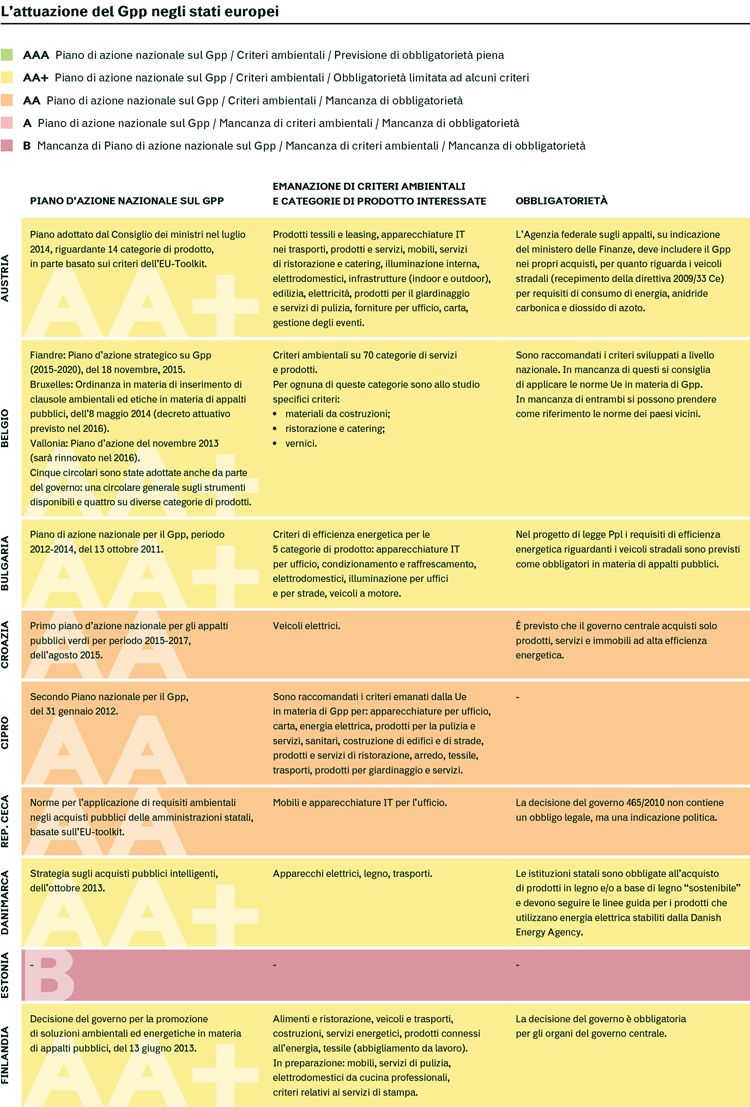
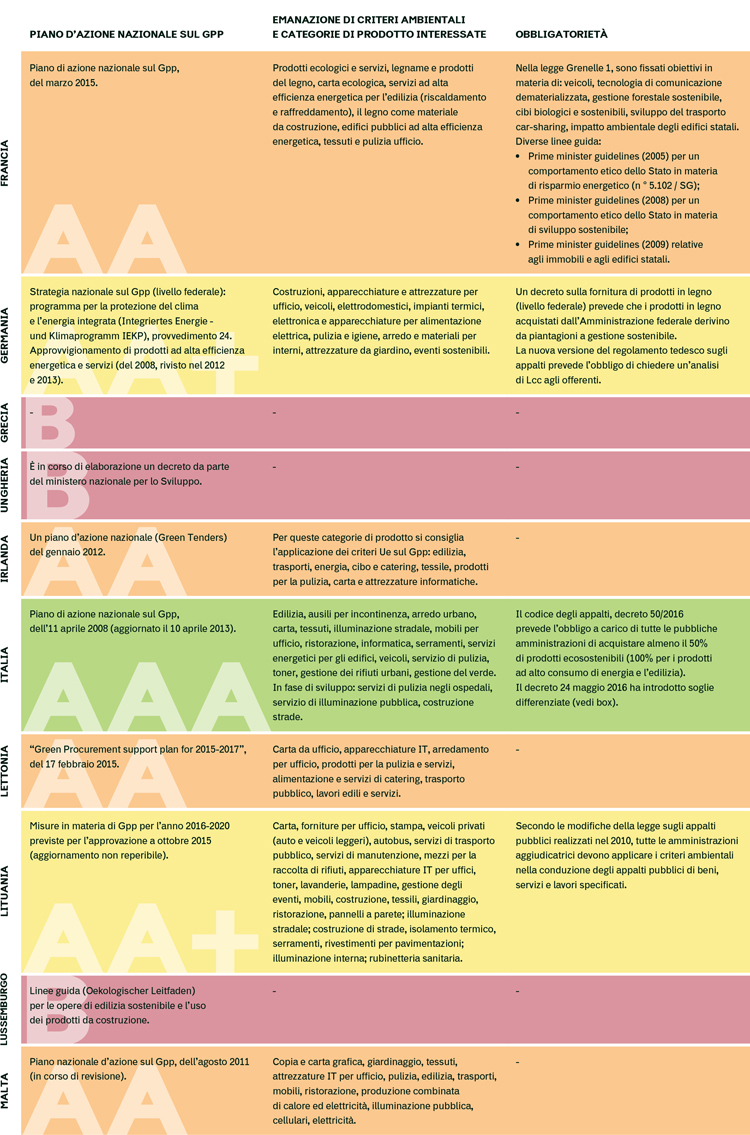
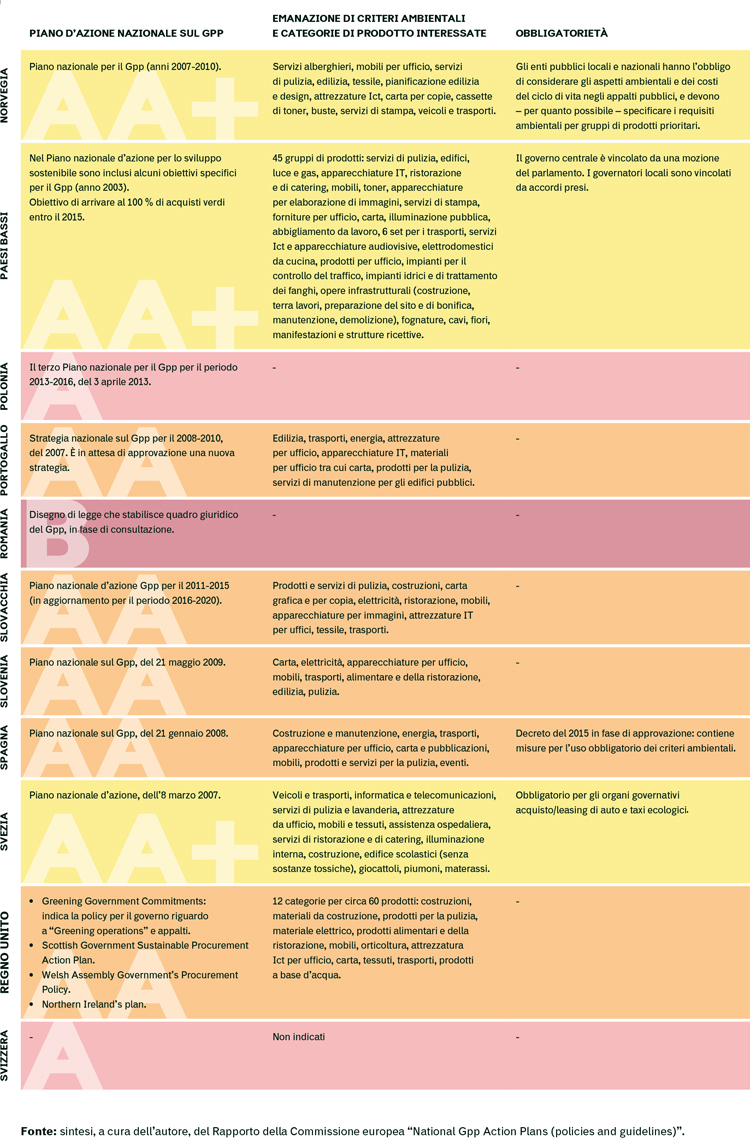
This overview also helps us imagine the level of creation of a fully GPP society, that is characterized by a global market strongly based on partly “forced” public procurement of products and services with the least environmental impact.
Just to give you a few examples: a society with high performance public lighting, with public buildings with high environmental sustainability standards (from planning to building and maintenance), with office and school furniture made with recycled and noxious-substance-free materials. And with school canteens serving organic and local food.
Compulsoriness of GPP in Italy
In Italy, GPP became compulsory with the adoption of the “procurement directive package” (2014/24/EC, 2014/24/EC and 2014/25/EC) by Dlgs 50/2016 which came into force on 20th April 2016: the new “Procurement Code”. This regulation orders all public adminstrations (art. 34) to include environmental minimum requirements (that is EMRs adopted by the Ministry of Environment) in planning and call for tenders documentation, according to established minimum thresholds.
EMRs refer to each purchasing category of products and services and include the procedure that the public administration must follow to green its procurements: integration in the object of the call for tenders, requisites of competitors, technical specifications that the product or service must possess in order to be classified as ecosustainable, checking criteria of requirements established by the commissioning body.
Central role is given to an offer economically advantageous from a quality/price ratio point of view, assessed according to objective criteria including environmental and social ones and based on costs taking into account life cycle cost, LCC (Articles 94 and subsequent articles).
Great importance is given to environmental certifications of products that can be imposed by the commissioning body or accepted as proof but only if they satisfy the high reliability requirements provided for by Article 69.
The following table shows some of the environmental minimum requirements issued by the Ministry of Environment, with specific reference to a minimum compulsory application threshold.
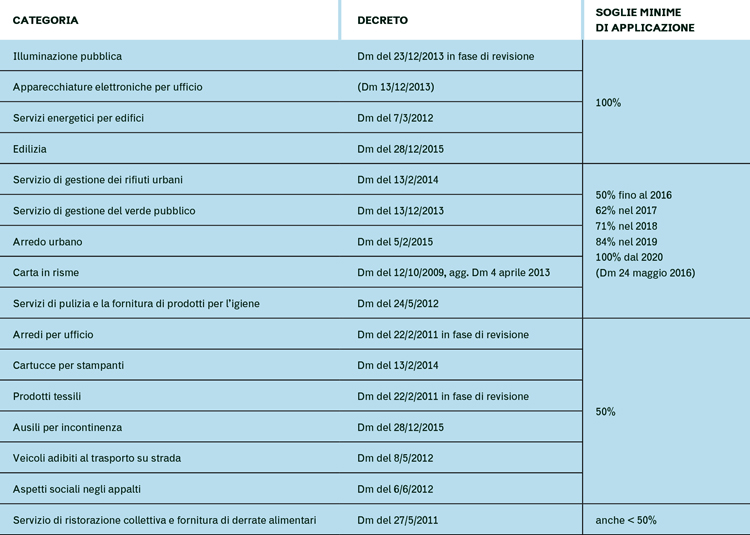
ReMade in Italy, www.remadeinitaly.it
This article has been made possible thanks to Viscolube support



